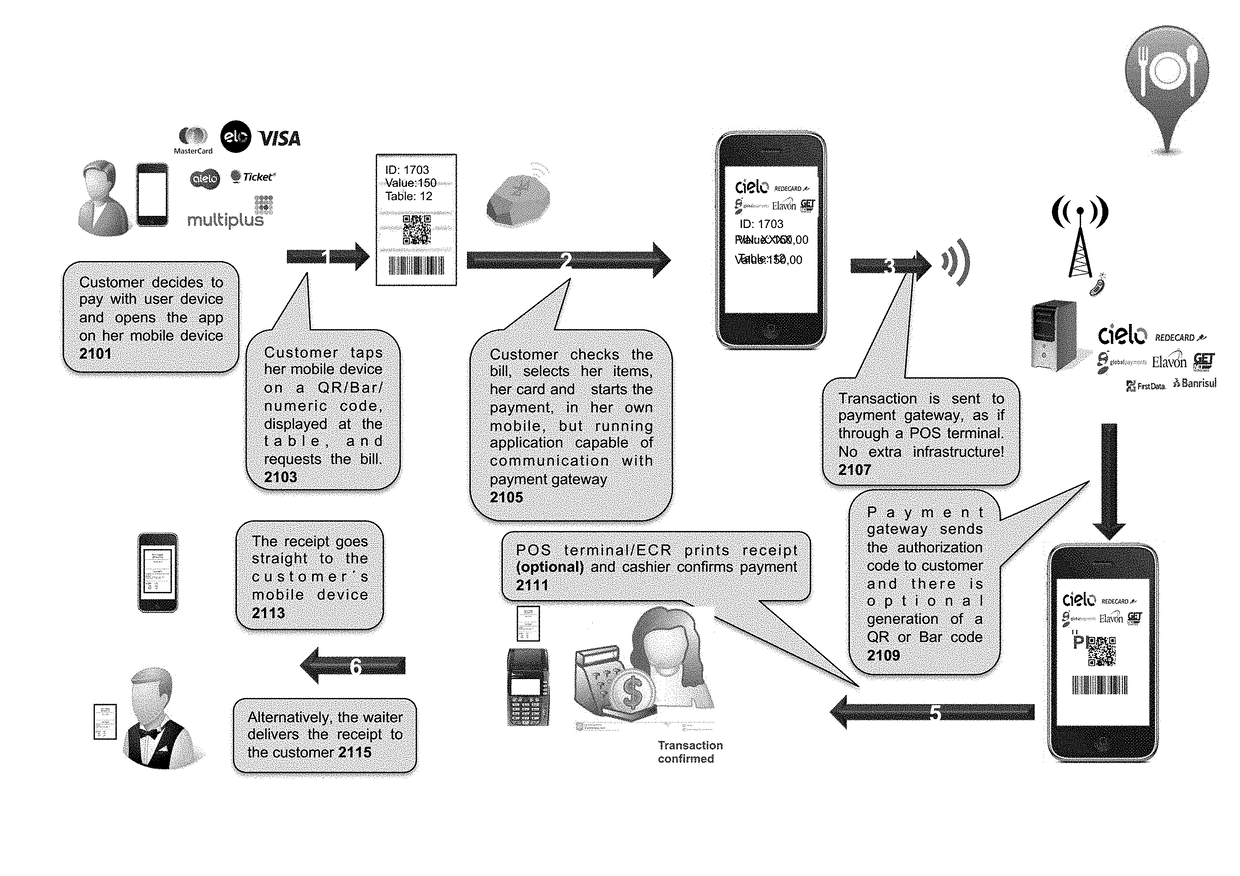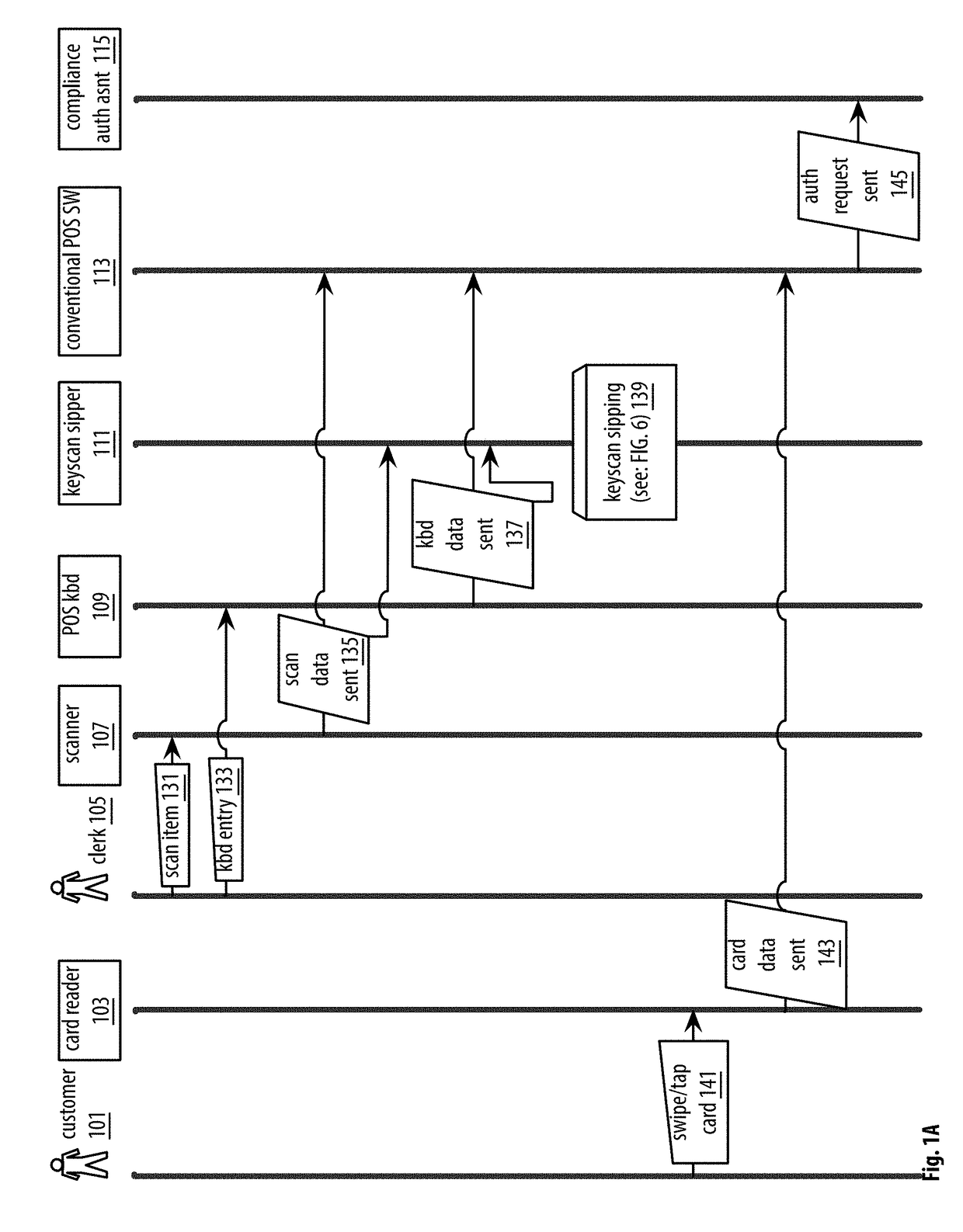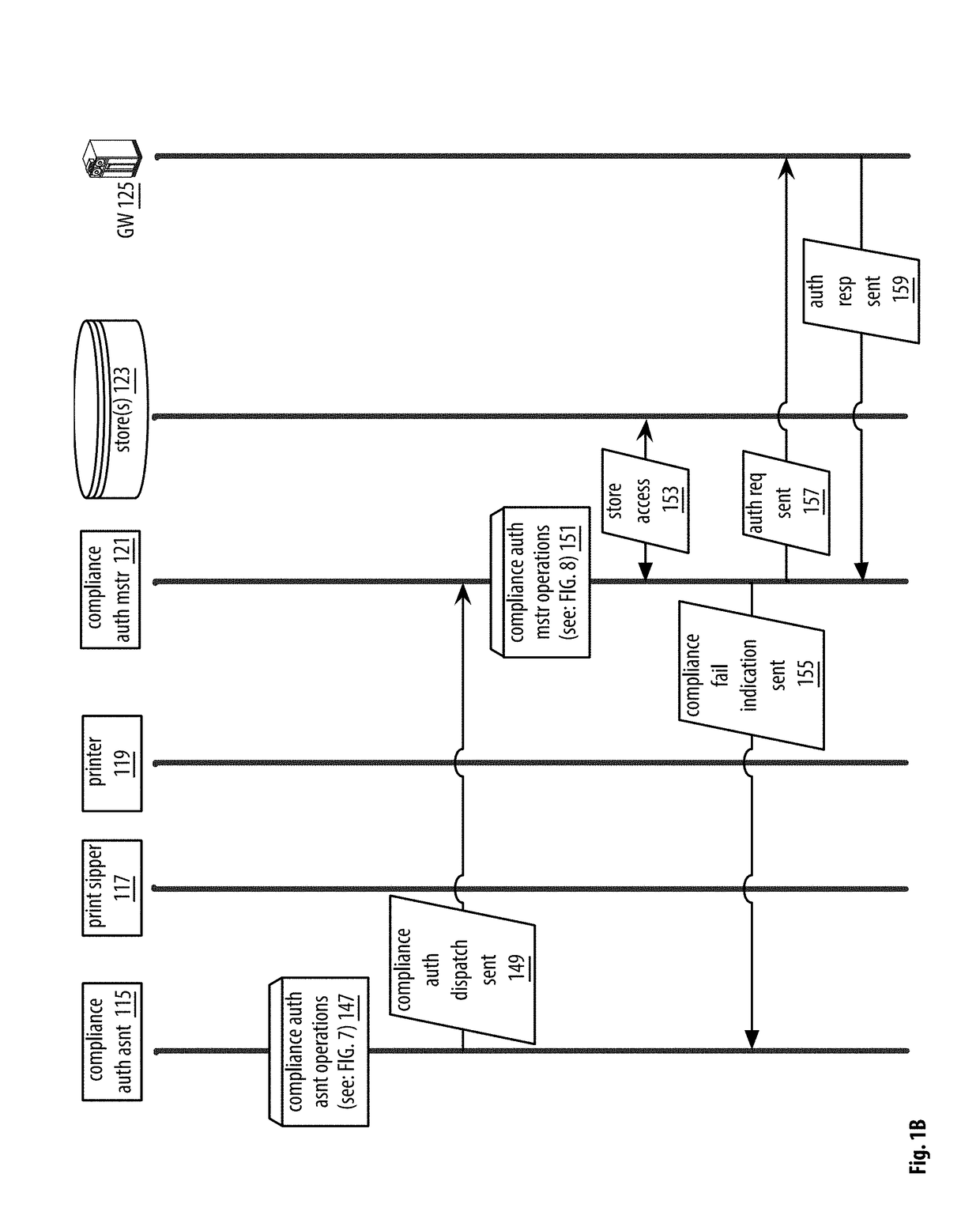Moreover, such intermediary
layers typically require complicated setup actions from a commerce location that wishes for patrons to be able to make
user device-based payments to the commerce location using those intermediary
layers.
As such, many commerce locations find themselves unwilling to endure such complicated setup actions, leaving their patrons unable to make
user device-based payments via those intermediary
layers.
However, such
scanner-obtained data typically goes no further than the infrastructure POS, and such printer-destined data typically goes no further than the printer, thus leaving this trove of information untapped.
Turning to yet another
facet of payments made at commerce locations, it is noted that often in use at commerce locations are limited-capability POS devices whose software-holding memory (e.g., a flash-based memory) does not allow for alteration of individual bytes or other portions thereof, but instead only for overwriting of the entirety of the memory.
Such being the case, software updates are typically sent to such limited-capability POS devices in the form of large images to be employed in totally overwriting such memory.
As such limited-capability POS devices often employ a link which is of
low speed, high cost, or both in receiving such images (e.g., a cellular link), the
large size of these images causes an uncomfortable—but seemingly unavoidable—situation.
Such limited-capability POS devices may be ones possessing software memory (e.g.,
flash memory) which does not allow for alteration of individual portions thereof but instead only for complete overwrite.
Such limited-capability POS devices may moreover be ones whose data links are of limited bandwidth and / or high cost.
Moreover, the
declaration does not indicate the method to be capable of throwing an error.
As one example, the information might be considered unsatisfactory where the an uncertainty
radius of ten meters or greater is indicated out of concern that such information might not accurately place the user device in the commerce location in which it is actually located.
Alternately or additionally, the information might be considered unsatisfactory where the
timestamp information conveys that the data is more than one minute old out of concern that the data may reflect a prior location of the user device rather than the current location.
It is additionally noted that such a tie—and therefore such a thrown error—may correspond to the circumstance of entered text being insufficient to yield commerce
location determination (e.g., entered text which is poorly worded and / or of too short a length may cause the
inverted index to return insignificant results and therefore a tie).
It is noted that where such consideration yields a tie the method may throw an error.
It is additionally noted that such a tie—and therefore such a thrown error—may correspond to the circumstance of captured frames being insufficient to yield commerce
location determination (e.g., captured frames which are poorly imaged may cause the
inverted index to return insignificant results and therefore a tie).
As an example, an error might be thrown by one of these methods in the case where no commerce location UUID can be determined by that method.
Where both of the noted methods thusly throw an error (i.e., where neither method is able to determine a commerce location UUID), the user device might make the user aware of this.
For instance, certain sales records may be available which specify sales information in terms of retail location-specific and / or chain-specific SKUs, and due to the retail location-specificity and / or chain-specificity of such SKUs performing cross-retail location and / or cross-chain analyses may be difficult.
UPCs, however, are not, say, retail location-specific or chain-specific.
However, the order in which item UPCs are scanned in—or in case of, say, scanning failure typed in—may not match the order in which those items—and by extension their SKUs—are listed on the
receipt.
Changes-only updates may not be conventionally sent from the vantage point that, as noted, the memory of such POS devices does not allow for the changing of individual bytes or other portions thereof.
However, such sending of such images to be employed in totally overwriting such POS device memory increases bandwidth use, an issue compounded by it being the case that such limited-capability POS devices often receive their updates via a limited bandwidth and / or high cost link such as cellular.
Such limited-capability POS device (e.g., a card
machine) may possess a software memory (e.g.,
flash memory) which does not allow for alteration of individual bytes or other portions thereof but instead only for complete overwrite.
The limited-capability POS device may moreover be one whose
data link is of limited bandwidth and / or high cost (e.g., a cellular link).
However, memory is a fungible technology and resource, thus, any number of memory embodiments may be employed in lieu of or in concert with one another.
For example, a computer systemization may be configured wherein the operation of on-
chip CPU memory (e.g., registers), RAM, ROM, and any other storage devices are provided by a paper punch tape or paper punch card mechanism; however, such an embodiment would result in an extremely
slow rate of operation.
However, more limited and / or less secure operating systems also may be employed such as Apple Macintosh OS, IBM OS / 2, Microsoft DOS,
Microsoft Windows 2000 / 2003 / 3.1 / 95 / 98 / CE / Millennium / Mobile / NT / Vista / XP (
Server), Palm OS, and / or the like.
 Login to View More
Login to View More  Login to View More
Login to View More 


